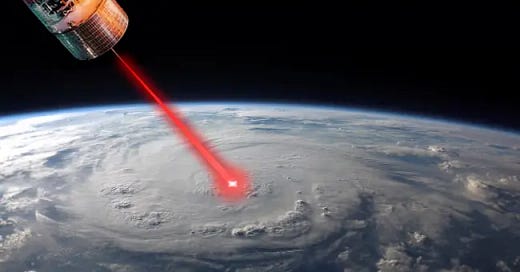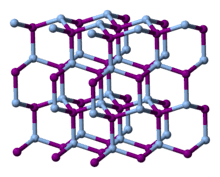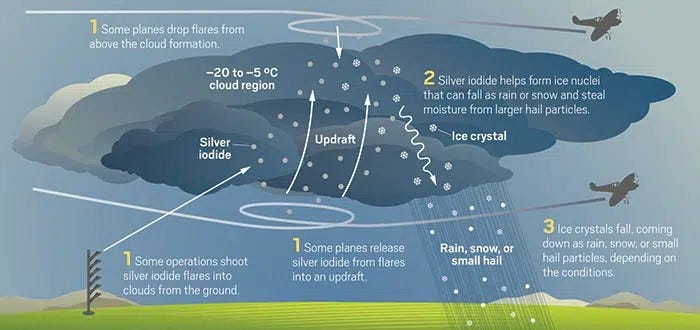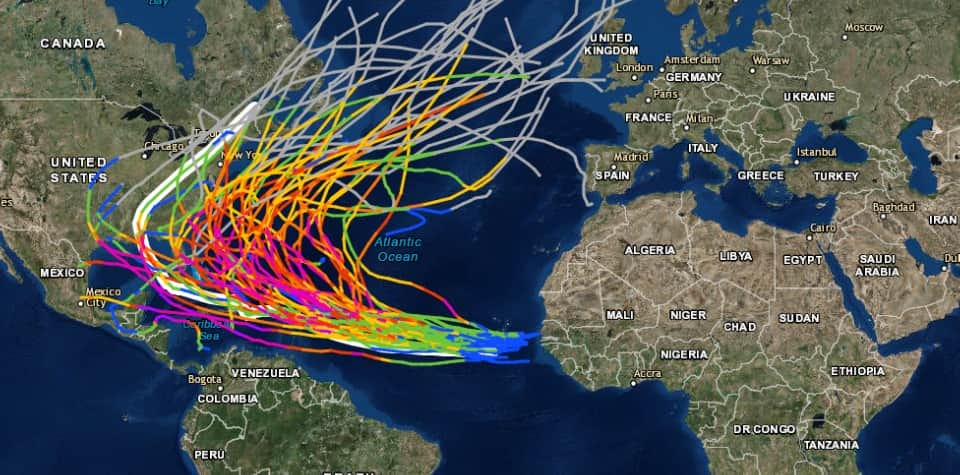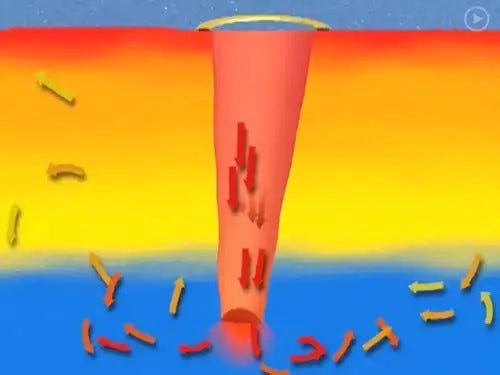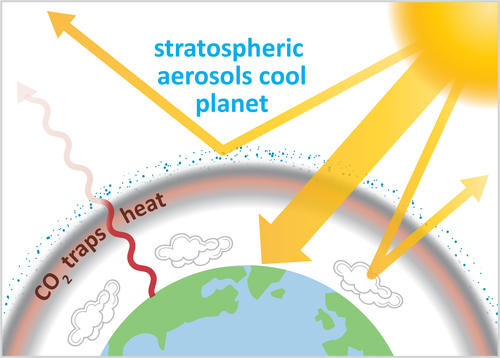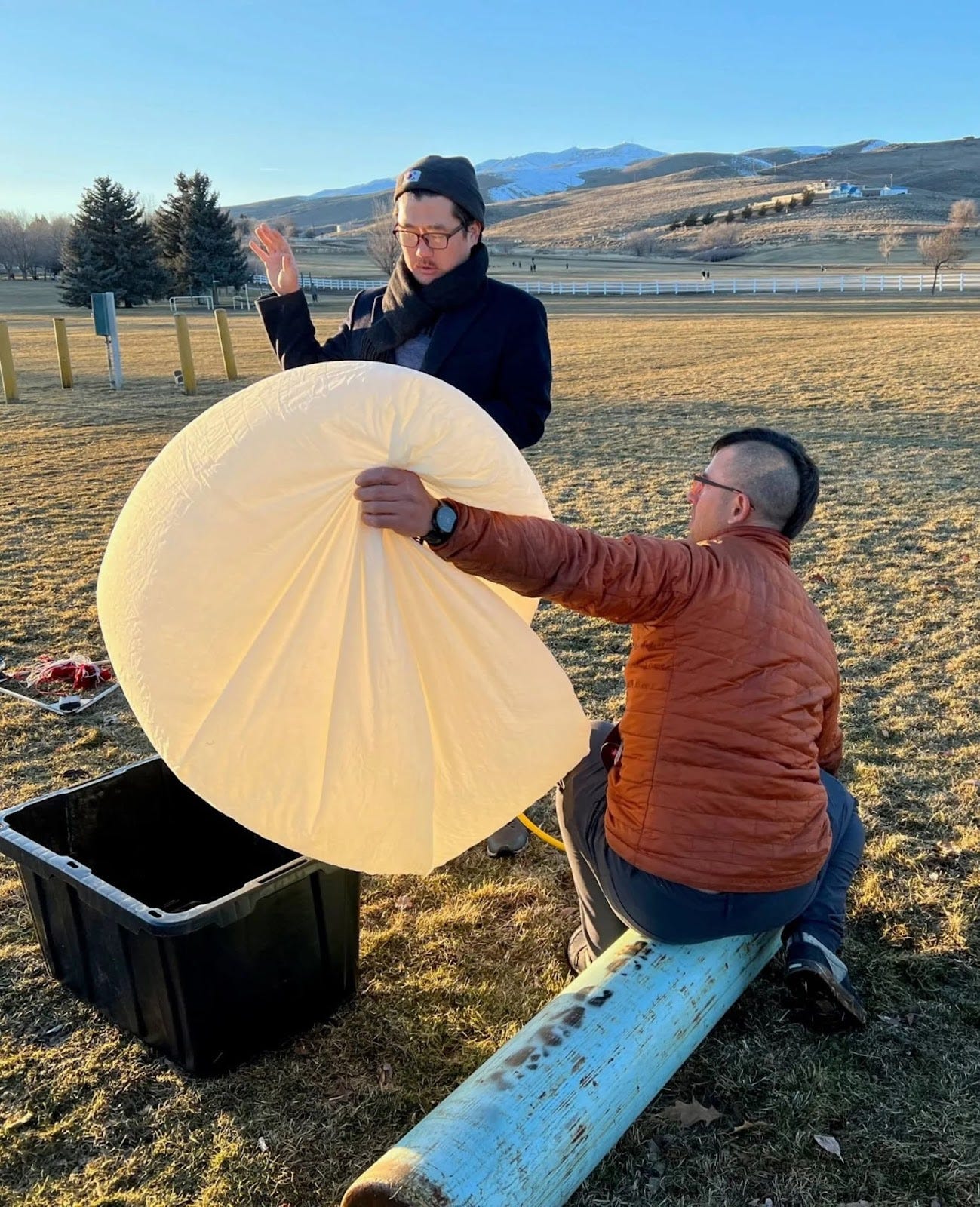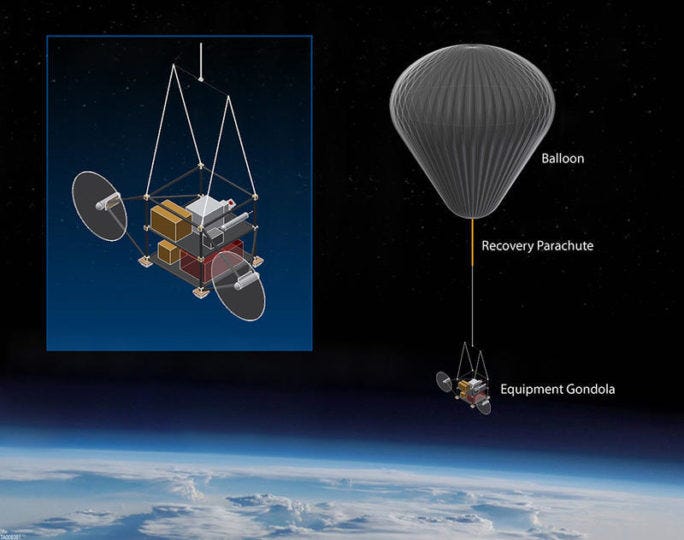Can We Control Hurricanes? Exploring the Limits of Weather Modification
Discover the latest attempts to tame nature’s fury with technology, from cloud seeding to ocean cooling.
Hurricanes Helene and Milton recently struck the Florida coast, causing widespread devastation across the southeastern U.S. The storms resulted in hundreds of deaths, millions of people without power, and over $300 billion in estimated damages.
The increasing frequency of these major storms has turned insuring Floridian homes into a nightmare for both homeowners and insurers. Florida homeowners now pay four times the national average for property insurance, and in the past year alone, these costs have risen by an average of 40%. Additionally, one-eighth of homeowners had their policies dropped by carriers, and about one-third of those affected are planning to move as a result. On the insurer's side, seven “A-rated” property insurers in Florida went bankrupt in 2021 and 2022 due to their inability to cover claims from hurricane damage.
As the most recent hurricanes made landfall, I, like many others, followed the updates on X (formerly Twitter), where I encountered bold claims about weather control. While I don’t believe the government can control the weather, it did spark my curiosity about existing weather modification technologies.
This got me thinking - if technology could weaken or redirect hurricanes, could it act as a form of secondary insurance for Florida homeowners? I decided to explore what's currently in use, what has been tried, and what might be possible.
Cloud Seeding
A technique used by many countries around the world, cloud seeding is the most widely used form of weather modification today. Clouds consist of water vapor, but for this vapor to turn into rain or snow, it must condense around tiny particles of dust or salt in the atmosphere. Without these particles, precipitation won't occur.
The goal of cloud seeding is to increase precipitation by introducing artificial condensation nuclei into clouds, giving water vapor something to condense around (perhaps a more accurate name for this might be "precipitation induction," since clouds must already be present for the technique to work). The most effective material for this is silver iodide, which has a crystalline structure similar to natural ice.
When dispersed into clouds, silver iodide encourages ice crystal formation. As these crystals grow, they eventually fall due to gravity. If the lower atmosphere is above freezing, they melt and fall as rain; if it's below freezing, they descend as snow.
Nuclei can be dispersed by aircraft or ground-based generators. Aircraft may release silver iodide flares directly into clouds or, less commonly, spray a liquid solution. On the ground, flares can be launched into clouds, or generators can burn a silver iodide solution, producing a plume that rises into the clouds.
Although cloud seeding has recently gained greater attention, it's not a new technique, having been first conceived by Louis Gathmann in 1891. Today, cloud seeding is primarily used to increase rainfall in drought-prone areas, though it has also been explored for more ambitious weather modification.
In the 1960s, the U.S. government initiated Project Stormfury, an experiment to weaken hurricanes using cloud seeding. Scientists hypothesized that seeding just outside a hurricane’s eyewall would create a larger, secondary eyewall, which would drain energy from the original and lead to its dissipation. This process, known as eyewall replacement, would reduce wind speeds due to the partial conservation of the storm's angular momentum. Since hurricane damage increases with the square of wind speed, even a small reduction could significantly lower a storm’s destructiveness.
Initially, Project Stormfury appeared successful, as scientists observed eyewall replacement and reduced wind speeds. However, it later became clear that eyewall replacement occurs naturally in hurricanes (as seen in Hurricane Milton), leading some to question the origin of the project’s success. Further studies revealed that hurricanes contain water vapor too warm for silver iodide to be effective, and cloud seeding had no impact on the storms. As a result, Project Stormfury was canceled in 1983.
Despite its failure in hurricane modification, cloud seeding has proven effective in increasing precipitation under the right conditions, typically by about 10%. It is frequently used by ski resorts to boost snowpack and in arid countries like the UAE to increase rainfall. China even used cloud seeding to clear moisture from the skies before the 2008 Olympics to ensure dry weather during the events.
While cloud seeding is commonly employed, some experts argue that its results are still unpredictable. One startup is working to change that. Rainmaker, located in the deep-tech startup hub of El Segundo, is developing drones capable of more precise dispersion of condensation nuclei and advanced weather modeling systems to better predict ideal conditions for cloud seeding. Their technology aims to support agriculture and maintain freshwater supplies.
Cloud Ionization
One concern about cloud seeding is its potential environmental impact, particularly from dispersing silver iodide into the atmosphere. Silver ions can be toxic, especially to aquatic life. While some studies have found slightly higher concentrations of silver in rainwater from cloud-seeded areas, others suggest the environmental impact is negligible. However, the research remains inconclusive, and more definitive studies are needed.
Regardless of cloud seedings environmental impact, cloud ionization proposes a chemical-free alternative. This method uses ground-based high-voltage electrodes to negatively charge atmospheric particles, increasing their ability to condense water vapor into raindrops.
The process begins when the electric field around the electrodes releases free electrons into the surrounding air. These electrons combine with oxygen molecules (O2) to form negative oxygen ions (O2-). These ions are carried upward by natural wind currents, attaching to atmospheric particles and giving them a negative charge. Negatively charged particles are more effective at attracting polar water molecules, making them better condensation nuclei.
This technique mimics a naturally occurring phenomenon where solar radiation ionizes atmospheric gases and is similar to the way ionic air purifiers work. Ground-based ionization has been shown to increase rainfall by up to 18%.
Despite its potential, cloud ionization has not gained widespread use, likely due to the higher infrastructure costs compared to traditional cloud seeding. However, there are some startups in this field. RainMakers has been conducting cloud ionization projects since the early 2000s, achieving successful rainfall increases in Switzerland, Australia, and Jordan. Their most significant success was a three-year project in Oman, which produced a 27% increase in rainfall compared to the 30-year historical average.
Another company, Rain Enhancement Technologies, aims to bring cloud ionization to the U.S. Although they have yet to conduct major operations, they plan to go public on the NASDAQ through a reverse merger.
Both cloud ionization and seeding show promise in increasing rainfall, offering potential solutions for drought-stricken regions. However, neither technique seems capable of controlling destructive storms. More radical ideas may be needed to lessen the impact of hurricanes.
Ocean Surface Cooling
Hurricanes are fueled by warm ocean waters in Earth's tropical regions. The evaporation of this warm seawater fills the lower atmosphere with moisture, and when combined with converging winds, a hurricane can form. However, if the water temperature is below 27°C (80°F), hurricanes cannot develop and will remain weaker tropical storms.
One proposed method to reduce the frequency and intensity of hurricanes is cooling the ocean’s surface. While cooling the entire ocean surface is impossible, hurricanes affecting the U.S. typically follow a path known as Hurricane Alley. By strategically cooling the ocean in this region, where hurricanes are most likely to strengthen, we could potentially reduce their power and destructiveness.
Norwegian company OceanTherm is developing a device called the "bubble curtain" to achieve this. The bubble curtain consists of a perforated pipe that releases pressurized air from deep water, causing an upwelling of cold water to the surface and temporarily lowering surface temperatures. The company estimates it would cost around $1 billion to deploy enough bubble curtains across the Atlantic basin to make an impact. They are also working on a mobile version of the device that can be towed by boats. Tests in Norwegian waters have shown surface cooling by several degrees.
Back in 2009 Bill Gates made headlines when he filed five patents for an ocean-cooling device in partnership with Intellectual Ventures. The device is an evolution of the Salter Sink, first proposed by Prof. Stephen H. Salter (a co-inventor on the patents). Salter Sinks are large devices, up to 100 meters in diameter, designed to pump warm surface water into deeper layers of the ocean. They utilize waves' natural energy to push warm water through non-return valves into a down-tube extending to the cooler depths. Despite the concept’s potential, the patents have not led to any large-scale testing of Salter Sinks.
Both the bubble curtain and Salter Sinks face significant logistical challenges. The bubble curtain would require hundreds of miles of piping to be laid across the ocean floor, or a fleet of boats traveling directly in the path of an oncoming hurricane - a job I, for one, will not be volunteering for. Salter Sinks, on the other hand, would need hundreds, if not thousands, of 100-meter-wide structures scattered across the Atlantic basin, in areas that overlap with some of the world’s busiest shipping routes. This would greatly complicate navigation for cargo ships, which are not known for their maneuverability.
However, the biggest hurdle for these technologies is that neither has been tested at scale. A study by scientists at the University of Miami’s Rosenstiel School of Marine, Atmospheric, and Earth Science concluded that targeted ocean cooling would likely be ineffective. In their paper “targeted artificial ocean cooling to weaken tropical cyclones would be futile”, simulations showed that cooling a 260,000 km² area of ocean (roughly the size of Colorado) by several degrees could weaken a hurricane by 15% under ideal conditions. In reality, where conditions are far from ideal, the impact would be much smaller.
For now, large-scale ocean surface cooling does not seem to be a viable solution for weakening hurricanes. However, there is one last bold idea, inspired by nature's most explosive events.
Stratospheric Aerosol Injections
In 1991, the eruption of Mount Pinatubo released 17 million tonnes of sulfur dioxide (SO₂) into the stratosphere, creating the largest recorded SO₂ cloud. This event caught the attention of atmospheric scientists, who observed a global temperature drop of about 0.5°C (0.9°F) over the next year.
In the stratosphere, SO₂ reacts with water to form a reflective layer of sulfuric acid aerosol droplets. Stratospheric winds then disperse the aerosols across the globe creating a worldwide cooling effect from the sunlight reflection. Unlike in the lower atmosphere, where rain quickly washes out aerosols, they can remain in the stratosphere for years. Stratospheric Aerosol Injection (SAI) aims to replicate this natural phenomenon in order to cool the planet, reducing ocean temperatures and weakening hurricanes in the process.
Make Sunsets, a San Diego-based startup, has already begun deploying helium balloons to release SO₂ into the stratosphere. They offer customers “cooling credits” for $10, claiming that each gram of SO₂ offsets the warming effect of 1 ton of carbon dioxide (CO₂) for a year. To date, they have released 90 balloons, offsetting an estimated 64,655 tonnes of CO₂ warming. Another SAI startup, Stardust Solutions, recently raised $15 million in seed funding, though they have not yet disclosed their plans. Intellectual Ventures, the company behind the Salter Sink, has proposed using a massive hose to inject SO₂ into the stratosphere, however this too has yet to come to fruition.
While SAI shows promise as a global warming mitigation tool, it faces significant opposition. Critics argue that it could cause unintended environmental consequences, such as disrupting weather patterns or damaging the ozone layer. One major concern is that SO₂, when it eventually falls from the stratosphere, could lead to acid rain, which is particularly harmful to aquatic ecosystems sensitive to pH changes.
In 2020, the International Maritime Organization (IMO) reduced the allowable sulfur content in ship fuel from 3.5% to 0.5% to limit SO₂ emissions. However, a recent study found that this reduction may have inadvertently contributed to global warming by removing the cooling effect of sulfur aerosols.
Harvard University attempted to study SAI through the Stratospheric Controlled Perturbation Experiment (SCoPEx), which aimed to release up to 2 kg of material into the stratosphere to measure its effects on aerosol density, atmospheric chemistry, and light scattering. However, the project was scrapped after facing criticism from environmental and indigenous groups.
One criticism of SCoPEx was that even researching SAI could reduce the urgency to cut greenhouse gas emissions. Another concern is the potential for "geoengineering addiction," where SAI would need to be continuously maintained and scaled up as emissions rise. Additionally, If aerosol injections were suddenly stopped after being implemented, rapid and catastrophic warming could occur, as the accumulated greenhouse gases would quickly exert their full warming potential. There are also geopolitical challenges: since SAI would have global effects, questions arise over who would have the authority to deploy it and how it would be regulated.
Currently, there is little regulation around SAI, and most countries lack specific laws addressing the technique. While companies like Make Sunsets are deploying SAI, their efforts are minuscule compared to the scale needed to counter global CO₂ emissions. For example, the 65,000 tonnes of CO₂ warming they claim to have offset is negligible compared to the 37.4 billion tonnes of CO₂ emitted globally in 2023. For SAI to be scaled effectively, it will need to win public support and navigate significant regulatory challenges.
Rough Seas Ahead
Unfortunately, there are no effective weather modification options for protecting against hurricanes. Cloud seeding has proven ineffective, ocean surface cooling is a herculean logistical challenge, and SAI raises serious concerns about unintended consequences.
The truth is hurricanes are gargantuan monsters. The energy released by an average hurricane is roughly 200 times greater than the total electrical generating capacity of the entire planet. Over its lifecycle, one hurricane can produce as much energy as 10,000 nuclear bombs like the one dropped on Hiroshima.
Simply put, hurricanes are too powerful to control with current technology - and perhaps that's for the best. The ability to control the weather is a godlike power which, in the wrong hands, would certainly be turned into a weapon before it was used as a protective measure. Not to mention, the trial-and-error process of developing such technology carries a real risk of environmental catastrophe.
For now, my idea of hurricane insurance through weather modification seems unrealistic. The best approach for those living in hurricane-prone areas is to build storm-resistant infrastructure and be prepared for emergencies.
As William Arthur Ward once said, "The pessimist complains about the wind; the optimist expects it to change; the realist adjusts the sails."

